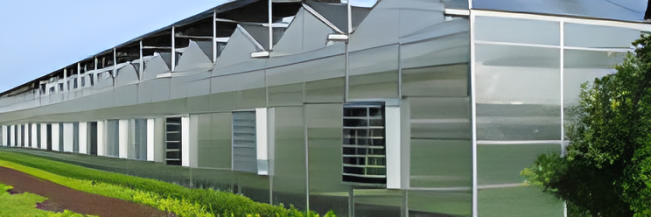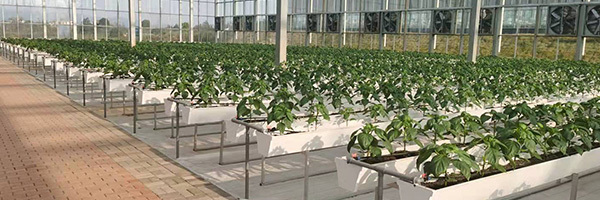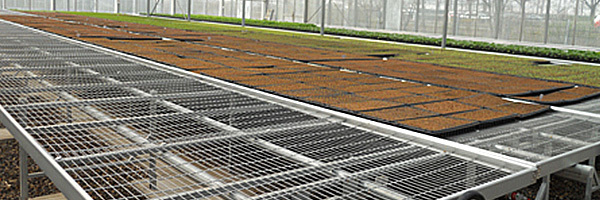-
-
Company Profile
-

Greenhouse Structures

-
Polycarbonate sheet greenhouse
-
Glass greenhouses
-
Multi-Span film greenhouse
-
Solar greenhouse
-
Sightseeing greenhouse
-
Double-film frame solar greenhouses
-
Glass and polycarbonate sheet greenhouses
-
Glass greenhouses structures suitable for planting
-
Glass Greenhouse for Scientific Research
View More -
-

-

Choosing the Right Glass Greenhouse for Your Research Needs: A Comprehensive Guide
Release time:
2025-05-17
Choosing the Right Glass Greenhouse for Your Research Needs Table of Contents 1. Introduction to Glass Greenhouses 2. Why Choose Glass Over Other Materials? 3. Assessing Your Research Needs for a Greenhouse 4. Different Designs of Glass Greenhouses 4.1 Lean-To Greenhouses 4.2 Freestanding Greenhouses 4.3 Attached Greenhouses 5. Key Features to Co

Choosing the Right Glass Greenhouse for Your Research Needs
Table of Contents
- 1. Introduction to Glass Greenhouses
- 2. Why Choose Glass Over Other Materials?
- 3. Assessing Your Research Needs for a Greenhouse
- 4. Different Designs of Glass Greenhouses
- 5. Key Features to Consider in Glass Greenhouses
- 6. Choosing the Right Location for Your Greenhouse
- 7. Budgeting for Your Glass Greenhouse
- 8. Maintenance and Care for Your Glass Greenhouse
- 9. FAQs About Glass Greenhouses
- 10. Conclusion
1. Introduction to Glass Greenhouses
In the realm of research, having the right environment for plant growth is paramount. A **glass greenhouse** serves as an ideal solution, providing a controlled environment that enhances plant growth and research outcomes. These structures allow for greater light transmission compared to other materials, which is crucial for photosynthesis and healthy plant development. In this article, we will guide you through the essential considerations for selecting the right glass greenhouse tailored to your research needs.
2. Why Choose Glass Over Other Materials?
When it comes to choosing a greenhouse, one might wonder why **glass** is the superior option compared to plastic or polycarbonate alternatives. Here are some compelling reasons:
Enhanced Light Transmission
Glass greenhouses allow for up to 90% of sunlight to penetrate, significantly outperforming plastic options. This high level of light transmission is vital for research involving light-sensitive plants.
Durability
Glass is robust and resistant to weather damage. Unlike plastic, which can warp or discolor over time, glass maintains its transparency and structural integrity, ensuring a long-lasting investment.
Temperature Regulation
Glass provides excellent insulation, helping to maintain a stable temperature within the greenhouse. This is essential for research that requires specific climate conditions.
3. Assessing Your Research Needs for a Greenhouse
Before investing in a glass greenhouse, it’s crucial to evaluate your specific research needs. Consider the following factors:
Type of Research
Identify the types of plants you will be growing and the research objectives. Some plants may require specific humidity levels, while others might thrive in cooler temperatures.
Space Requirements
Determine the amount of space needed for your research. Will you be growing in beds, containers, or hydroponics systems? This will influence the design and size of your greenhouse.
Accessibility
Ensure that your greenhouse design allows for easy access for maintenance and harvesting. Accessibility is vital for conducting regular research activities efficiently.
4. Different Designs of Glass Greenhouses
Glass greenhouses come in various designs, each suited to different research needs. Understanding these designs will help you choose the best fit for your project.
4.1 Lean-To Greenhouses
Lean-to greenhouses are attached to an existing structure, such as a building or wall. This design is space-efficient and benefits from the heat of the adjacent structure. It’s an excellent choice for researchers with limited space.
4.2 Freestanding Greenhouses
Freestanding greenhouses offer complete independence and flexibility in design. They can be placed anywhere in your research facility, allowing for optimal sunlight exposure. This design is ideal for larger-scale research operations.
4.3 Attached Greenhouses
Similar to lean-to models, attached greenhouses are connected to existing buildings but offer more freedom in size and shape. They can be expanded or modified based on research needs.
5. Key Features to Consider in Glass Greenhouses
When selecting a glass greenhouse, focus on these essential features that can significantly impact your research success.
5.1 Ventilation Systems
A well-ventilated greenhouse is crucial for controlling humidity and temperature levels. Look for greenhouses with adjustable roof vents, side vents, and fans for optimal air circulation.
5.2 Heating Options
Depending on your climate, consider the heating systems available. Options include electric heaters, gas heaters, or thermal mass systems that utilize stored heat to maintain temperatures.
5.3 Lighting Solutions
Natural sunlight is essential, but supplemental lighting may be necessary during shorter days or in cloudy conditions. LED grow lights are energy-efficient and can enhance research outcomes.
5.4 Irrigation Systems
An efficient irrigation system ensures that plants receive the right amount of water consistently. Consider automated drip irrigation systems or hydroponic setups for precise water management.
6. Choosing the Right Location for Your Greenhouse
The location of your greenhouse plays a vital role in its effectiveness. Here are key factors to consider:
Sun Exposure
Select a site with maximum sun exposure, ideally facing south or southeast. This orientation helps optimize light absorption throughout the day.
Wind Protection
Consider natural windbreaks such as trees or buildings to protect the greenhouse from strong winds. This can help maintain temperature control and reduce heating costs.
Accessibility to Resources
Ensure that the chosen location has convenient access to water, electricity, and transportation. This will facilitate easier maintenance and operational efficiency.
7. Budgeting for Your Glass Greenhouse
Creating a budget for your glass greenhouse is critical to ensure that you can meet your research needs without overspending. Consider the following components of your budget:
Initial Costs
Factor in the cost of materials, including glass panels, frames, and foundation. Freestanding greenhouses may incur higher initial costs but offer greater flexibility for research.
Operational Costs
Include expenses related to heating, cooling, lighting, and water. Regular maintenance should also be accounted for to extend the lifespan of your greenhouse.
Long-term Investment
Evaluate the long-term benefits of a glass greenhouse in terms of research productivity and outcomes. A well-chosen greenhouse can pay for itself through enhanced research efficiency.
8. Maintenance and Care for Your Glass Greenhouse
Proper maintenance is essential for the longevity and effectiveness of your glass greenhouse. Follow these best practices:
Regular Cleaning
Clean glass panels regularly to maximize light transmission. Dirty panels can significantly reduce light levels and affect plant growth.
Inspect for Damage
Frequent inspections for cracks or breaks in the glass, as well as structural integrity, can prevent costly repairs and ensure a safe environment for your plants.
Pest Management
Implement an integrated pest management (IPM) approach to control pests without harming your plants. This may include biological controls, traps, and organic pesticides.
9. FAQs About Glass Greenhouses
What is the lifespan of a glass greenhouse?
With proper care and maintenance, a glass greenhouse can last 20 years or more, making it a durable investment for research.
Can I grow any type of plant in a glass greenhouse?
Yes, glass greenhouses can accommodate a wide variety of plants, but it is essential to consider their specific light and temperature requirements.
How much does it cost to install a glass greenhouse?
Installation costs can vary widely based on size and design, but you can expect to spend anywhere from $5,000 to $50,000 or more.
Are glass greenhouses energy-efficient?
Yes, glass greenhouses can be energy-efficient if equipped with proper insulation and ventilation systems, helping to maintain optimal growing conditions while minimizing energy use.
What maintenance is required for a glass greenhouse?
Regular cleaning, inspections for damage, and pest management are essential maintenance tasks to ensure the greenhouse remains effective and safe for research.
10. Conclusion
Choosing the right glass greenhouse for your research needs is a significant decision that can impact your outcomes and productivity. By considering your specific research requirements, exploring different designs and features, and making informed decisions on budgeting and maintenance, you can create an optimal environment for plant growth. Investing in a glass greenhouse is not only an investment in your research but also a step towards advancing knowledge in your field. With the right greenhouse, you can unlock the full potential of your research endeavors and contribute valuable findings to the scientific community.Keyword:
Previous
Related News
Exploring the Benefits of Glass and Polycarbonate Sheet Greenhouses in Modern Agriculture
Greenhouses have become an integral part of modern agriculture, allowing for extended growing seasons and improved crop yields. Among the various materials used in greenhouse construction, glass and polycarbonate sheets stand out for their unique properties and benefits. Glass greenhouses are renowned for their superior light transmission. With the ability to allow up to 90% of sunlight to penetr
2025-06-01
Energy Savings: How a Green House Glass Roof Can Lower Your Bills
Energy Savings: How a Green House Glass Roof Can Lower Your Bills Table of Contents 1. Introduction to Greenhouse Glass Roofs 2. The Benefits of Installing a Glass Roof 3. Energy Efficiency: A Key Advantage 4. Cost Savings from Energy Efficiency 5. The Environmental Impact of Glass Roofs 6. The Installation Process of a Greenhouse Glass Roof 7. Maintenance Tips for Your Glass Roof 8. Frequently A
2025-05-27
Innovative Glass Greenhouse Structures for Optimal Plant Cultivation
--- In the realm of modern agriculture and horticulture, glass greenhouse structures have emerged as a game-changer for those looking to optimize their planting environments. Unlike traditional methods, glass greenhouses offer a controlled atmosphere that is crucial for plant health and productivity. The transparent nature of glass allows for maximum sunlight penetration, which is essential for ph
2025-05-22
Choosing the Right Glass Greenhouse for Your Research Needs: A Comprehensive Guide
Choosing the Right Glass Greenhouse for Your Research Needs Table of Contents 1. Introduction to Glass Greenhouses 2. Why Choose Glass Over Other Materials? 3. Assessing Your Research Needs for a Greenhouse 4. Different Designs of Glass Greenhouses 4.1 Lean-To Greenhouses 4.2 Freestanding Greenhouses 4.3 Attached Greenhouses 5. Key Features to Co
2025-05-17
Contact
Address: Hebei University of Technology Science and Technology Park, High tech Zone, Cangzhou City, Hebei Province
International Trade Office: Huashang Building, Yunhe District, Cangzhou City (500 meters east of Cangzhou West High speed Railway Station)
Tel:+86 15301369860

Online message
-







